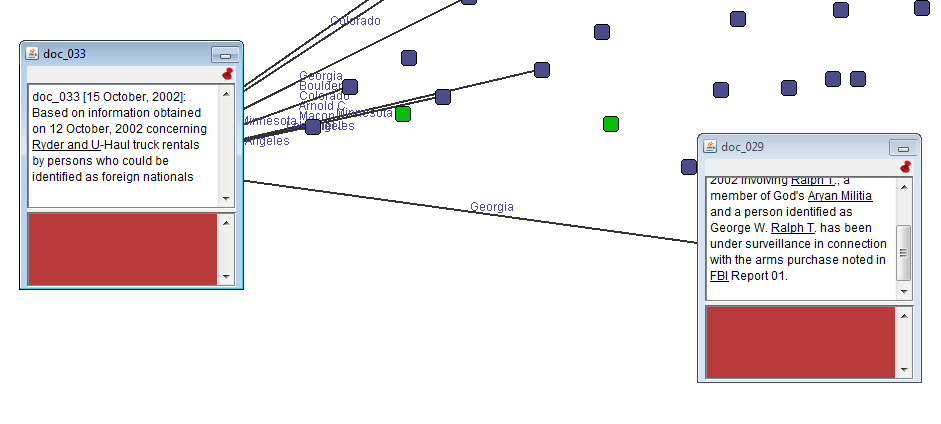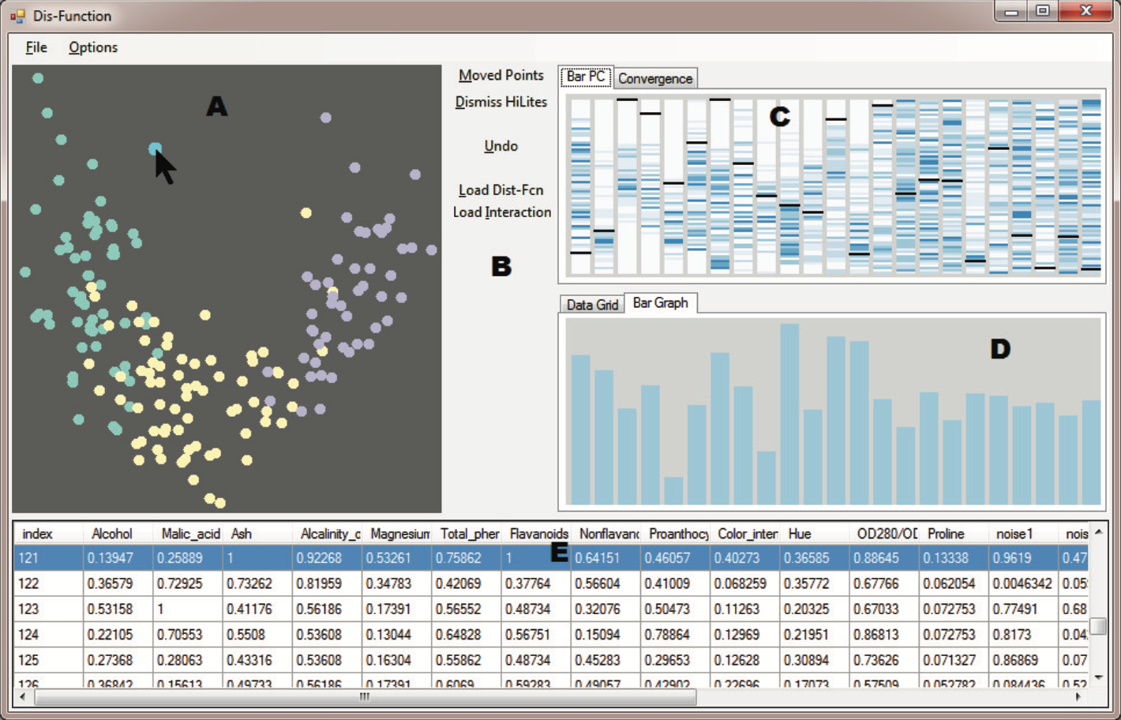Modeling steering leverages provenance data to improve the underlying data representations, machine learning models, or projection calculations in the case of high-dimensional datasets. Much of the work in this area uses active and reinforcement learning methods to learn from realtime interaction data and interactively improve the visualization. One noteworthy approach to model steering is Semantic Interaction, which defines the process of inferring model parameters as users directly manipulate data visualization components. For example, the IN-SPIRE system allows the user to directly manipulate the spatial layout of text documents to express perceived document similarity. Similarly, with Dis-Function an analyst can update the parameters of a distance function in a two-dimensional data projection by adjusting the positions of visual points. A similar approach is used by Hu et al. with a spatialization algorithm to preserve semantics by allowing the user to move objects or highlight unmoved ones. Other research has applied model steering to refine data simulations or to steer approximation models of real-time streaming data.


